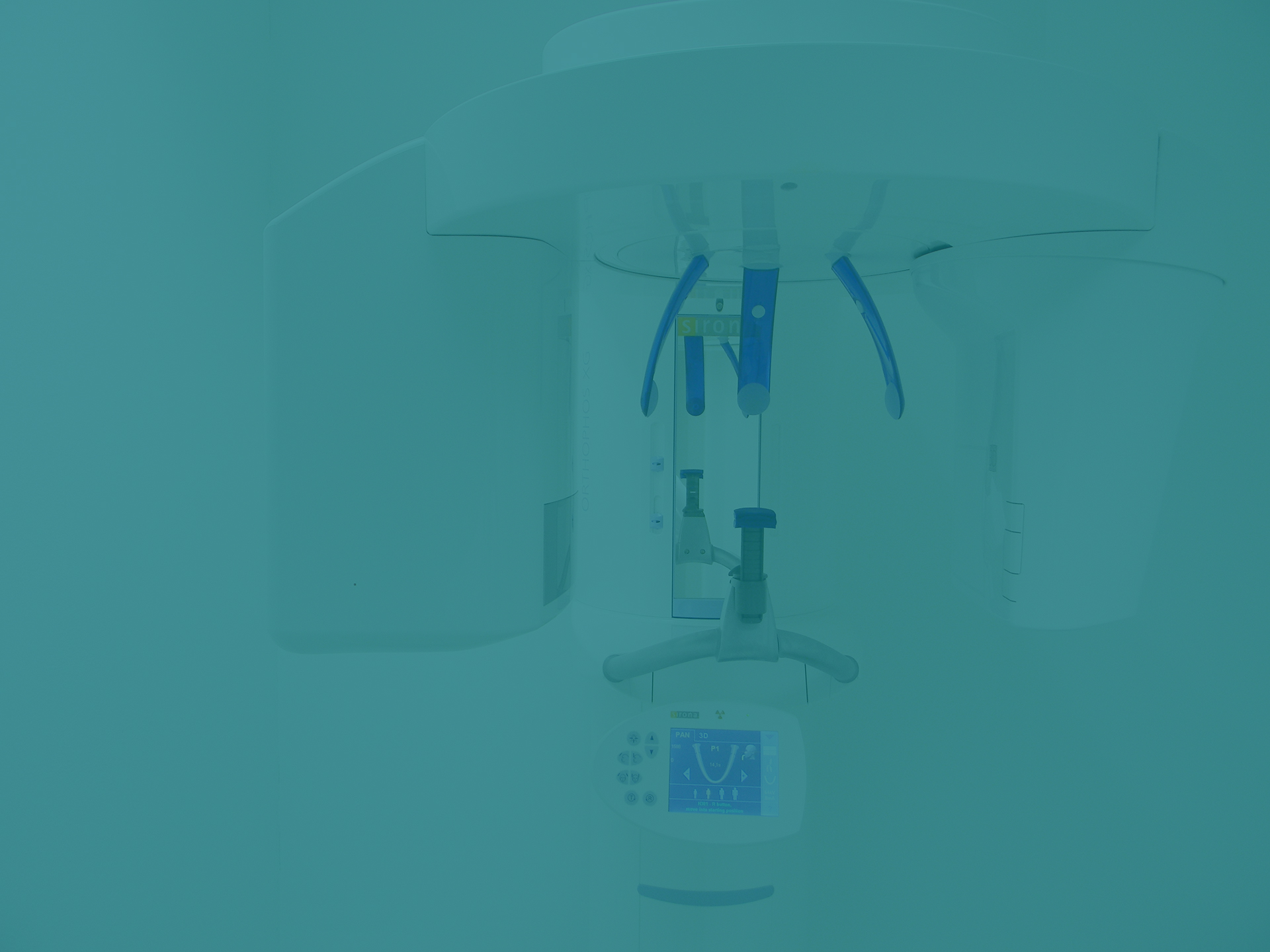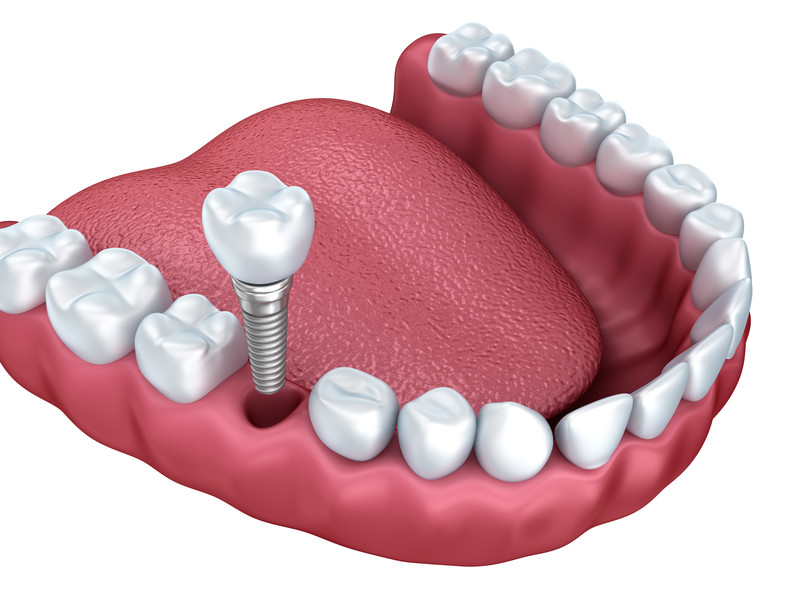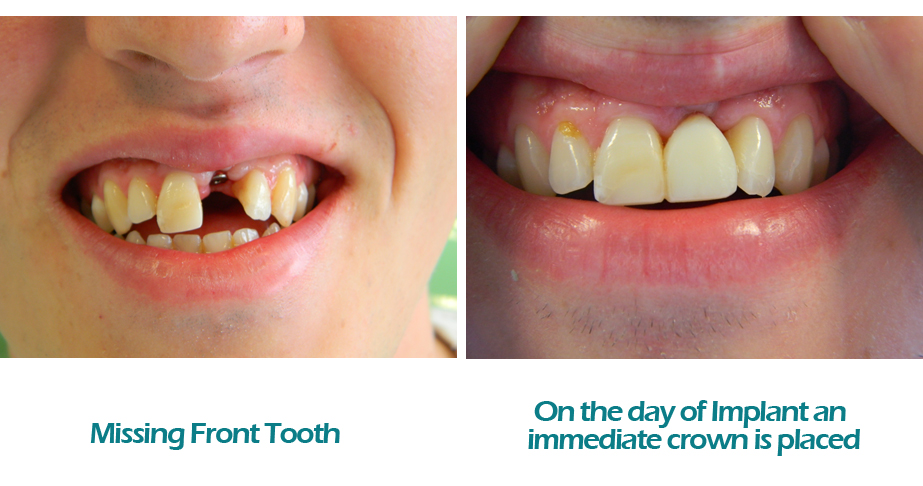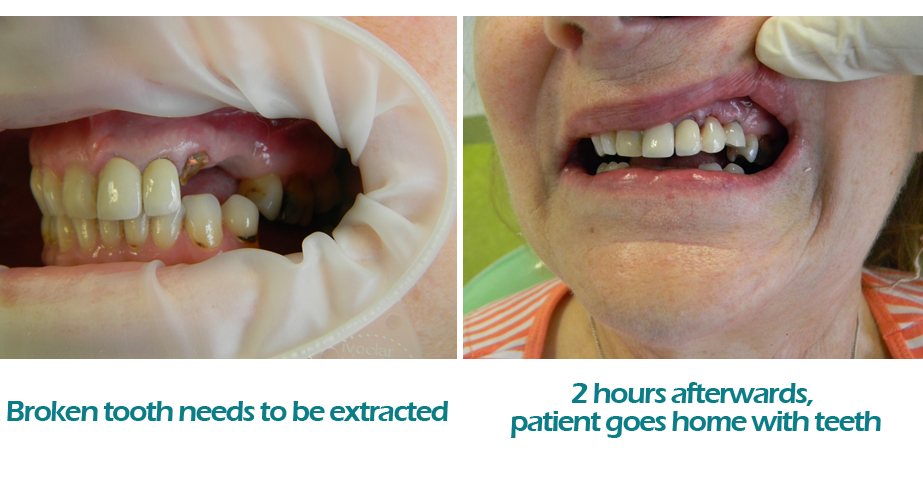The procedure – from diagnosis to aftercare
Dental Implant Procedure
Dental implants are metal anchors, which act as tooth root substitutes. These are placed into the natural bone normally with local anaesthetic. Dental implants can be used to replace one, two or all your teeth.
Small posts or “abutments” are then attached to the dental implant, which protrude through the gums. These posts provide stable anchors for artificial replacement teeth. For most patients, the placement of dental implants involves initially the assessment and treatment planning to determine the optimum placement of the implants. At this time we may take a CT scan which enables us to see the available bone in three dimensions. We can then plan your treatment precisely on the computer and explain to you and refine the choices and agree how best to proceed. The in house CT Scan allows us to determine the amount of bone and the best dimension o the best suited implant to maximise your chance of long term success. Usually this is then followed by two surgical procedures.
First, dental implants are placed. For the first three to four months following placement, the dental implants are beneath the surface of the gums gradually bonding with the natural bone. This process is called osseointegration. You should be able to wear temporary dentures or a temporary bridge and eat a reasonable diet during this time.
After the dental implant has bonded to the natural bone, the second phase begins. Your oral surgeon will uncover the dental implants and attach a small healing collar. Then, we will be able to begin making your new teeth. An impression must be taken. Then posts or attachments can be connected to the dental implants. The teeth replacements – either single dental crowns, multiple dental bridges or full arch options – are then made to fit over the posts or attachments.
The advantages and disadvantages of the various solutions are openly discussed so that you are well-informed on every aspect of the procedure before making a decision.

Insertion of the implant
The dental implant is surgically inserted under local anesthesia. A temporary restoration may be placed on the implant at time of surgery for the healing stage.
Healing phase
The healing phase usually lasts between a couple of weeks and a few months. During this period, ideally, the bone around the implant grows and integrates with the implant surface – a process called osseointegration. Good oral hygiene is vital in the healing stage of the treatment. Once healed, this artificial root acts as a base for fixing individual crowns, multi-tooth bridges, or an entire dental prosthesis.
The restoration is put in place
The dental laboratory uses an impression of the implant site to produce the crown, bridge or denture. The dentist will place the restoration after the dental implant has healed.
Aftercare
Implants are an excellent option and investment in your health. With the right aftercare, they can last for a lifetime. For such a long-term success, taking care of your implant is important. As with natural teeth, implants require the same regular check-ups and conscientious oral hygiene. Once you follow these guidelines, your implants can be maintained for decades.
The main benefits of dental implants

- A cost-effective option
- Dental implants preserve your facial structure.
- Dental implants maintain your smile.
- You can feel more comfortable talking, smiling and eating.
- Most patients do not experience any disruption to their daily life.
Call us on (091) 563 792 to book an consultant at Rdent, Galway





Add Comment